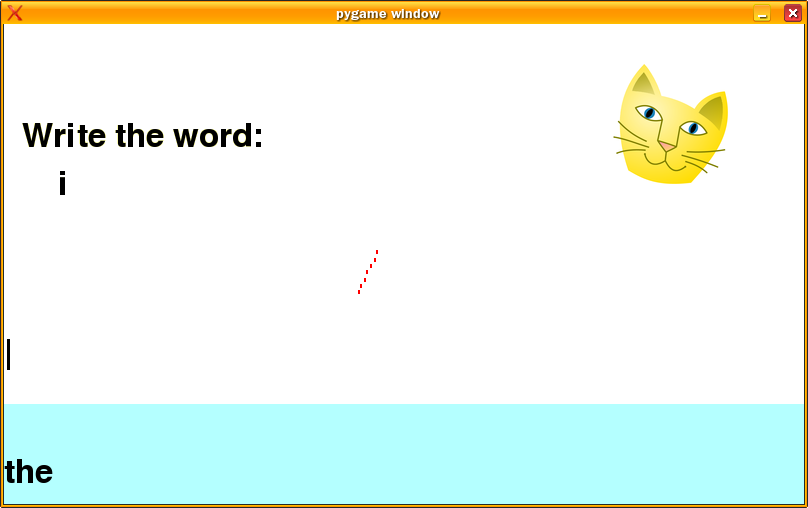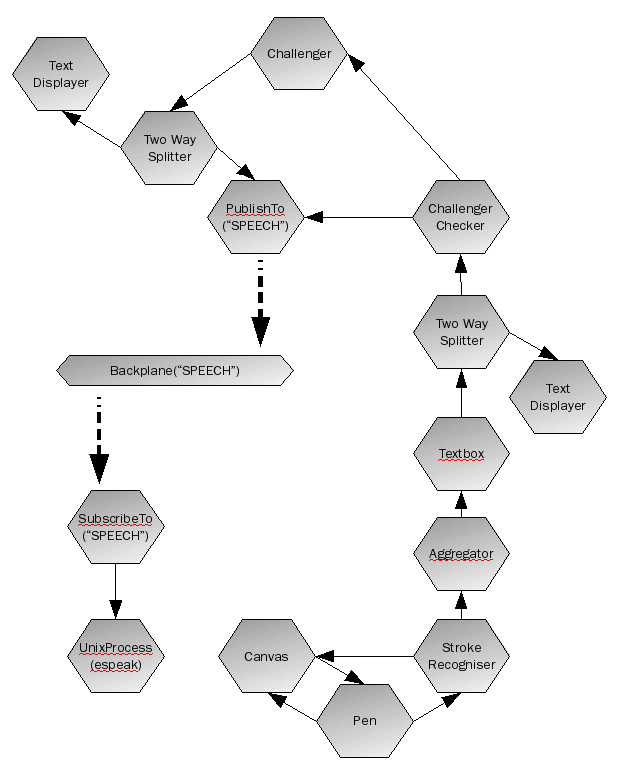August'24: Kamaelia is in maintenance mode and will recieve periodic updates, about twice a year, primarily targeted around Python 3 and ecosystem compatibility. PRs are always welcome. Latest Release: 1.14.32 (2024/3/24)
Hack for Mashed: Speak And Write
NOTE: This doesn't replace actually teaching - but it makes a lovely toy, in the style of a speak and spell from years ago...
This hack is a "toy" for a small child to assist them to learn to
read and write. They are asked to write specific words - both textually
and also using speech synthesis. What they write is then read out to
them. This version is by no means "complete", but it works.
The vocabulary it teaches (currently) is from sheet one of the DFES
Reception
Term, Reception Year word cards for literacy in
reading/writing.

Where to Get it:
First initial version here: (name reflects what I was calling it
then)
Installing:
~/incoming/> tar zxvf Kamaelia\ Speak\ N\ Learn-0.1.0.tar.gz
~/incoming/> cd Kamaelia\ Speak\ N\ Learn-0.1.0/Kamaelia/
~/Kamaelia/> python setup.py install
Where's the Source?
Running:
~> SpeakNLearn.py
Dependencies:
- You need to have espeak installed
- You need to have aplay installed
- You need to have pygame installed
Internals
This will shift off to the developers area since you don't need to
know this to use it, but provided for those who may find it
interesting:

To read this, start at the top - with Challenger. That sends a
challenge out, which is sent to both the display and to a backplane
called "speech". The speech backplane simply speaks anything that gets
to it. The child hears this and scribbles on the canvas. (The canvas
sends messages about scribbles to the pen which decides what to do -
draw, etc. The pen sends messages to the strokes (handwriting)
recogniser. They both need to be able to draw lines on the canvas,
and/or clear it.
The stroke recogniser sends messages to the aggregator which turns the
recognised strokes into commands the textbox understands. This includes
detecting a stroke from top right to bottom left to mean "press return".
The output from the text box is then forwarded to the display and also
to something that's checking what the challenger asked for. It then
sends a message to the "speech" backplane to say something to the user,
and also, if appropriate to the challenger. The challenger then either
repeats or says a new word. This diagram has a 1:1 correspondance with
the code.
What's inside the Stroke Recogniser?
For tomorrow :-)
Follow on Ideas
Instant Messenger for Children. They write, it speaks.
Michael, June 2008
